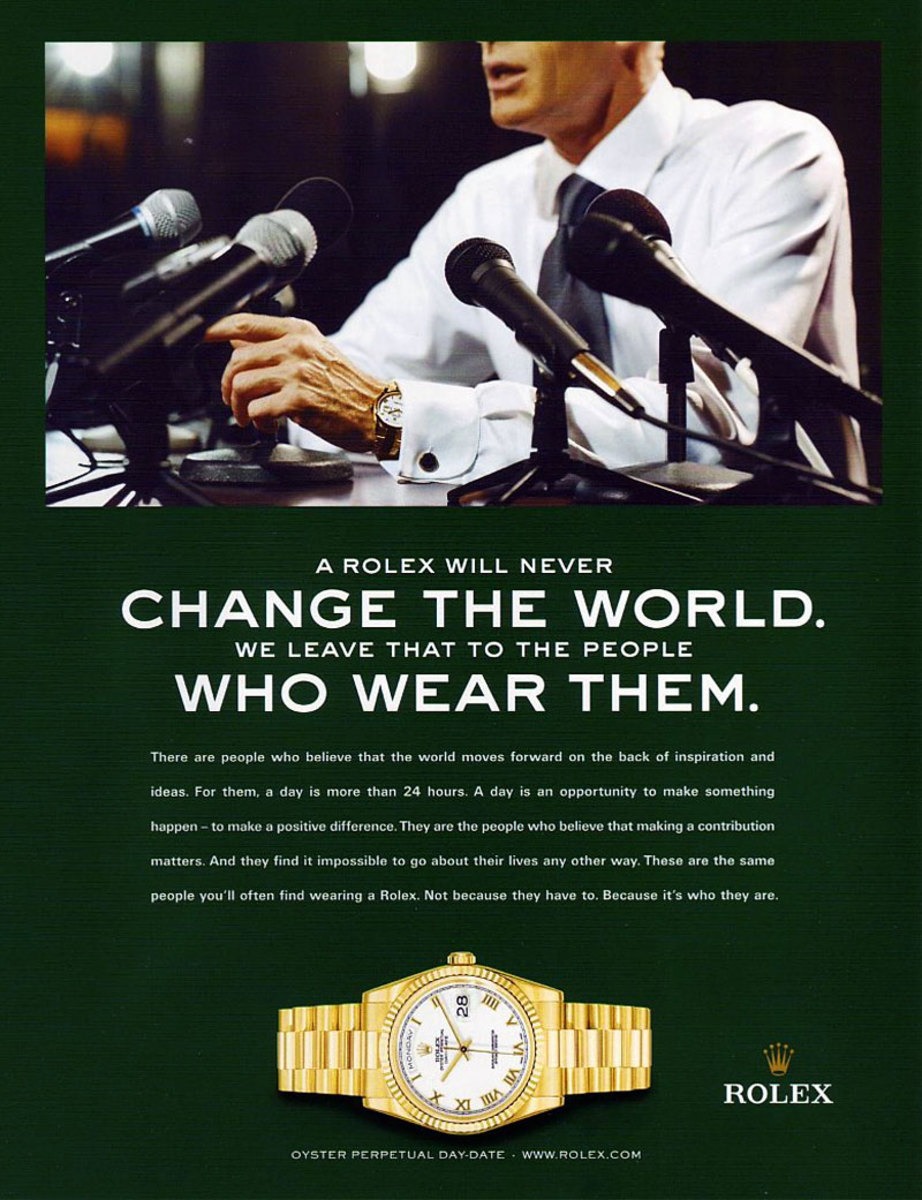*Brand archetype
Brand Archetype Ruler: the king of the market?

Does your brand set the standard for the market and are you the undisputed leader? The brand archetype Ruler is known as the king or aristocrat, the one with the most power. Many people like to follow a born leader, and that is where the strength of the Ruler archetype lies. Through various examples from industry and business services, we make the brand archetype tangible. You will learn how to apply this brand archetype to your brand.
Brand archetype Ruler: control and power

Mercedes-Benz has been positioned as the ruler for years.
Mercedes-Benz has been positioned as the ruler for years. When we think of a Ruler, we think of a king, president, CEO, or other “leading” figure who has a firm grip on the reins. For this type of brand, everything revolves around gaining (more) power. To achieve this, it uses symbols of power such as certain clothing, expensive jewelry, cars, or imposing buildings. But above all, we think of the ruler’s appearance: they have an innate authority and keep some distance. This gives the Ruler the power they want, and with that the control they use to create order and provide their customers with safety and success.
Prestige, status, or image is what matters most for the Ruler. A Ruler brand thus attracts people who want to be successful and important. However, while in the past a Ruler brand viewed its customers as subordinate, today it is the customers who are the Ruler. With a “Black” American Express credit card, you send a certain signal, especially if you just got out of your Mercedes S-Class. These brands facilitate your desire for status.
These are two examples of brands with which you can command a certain position. Another, more subdued form of the Ruler brand archetype merely creates order in a clearly defined world. This variant is less likely to absorb or suppress new, innovative parties. Think of leading institutions or regulating nonprofit organizations.
In terms of color use and photography, distance and authority come across well. Subdued colors – often blue, think of the blue blood of the aristocrat – and a not-too-warm color tone dominate in many Ruler brands. This is also the case with the two examples from the business services and industrial sectors that we discuss below.
Industrial brand archetype Ruler: Intel
Chipmaker Intel goes beyond the fact that it only makes chips (in many different types) and states that they make the “most amazing experiences of the future” possible in its communications. Even within American norms, the brand does not adopt modesty; the only thing more fantastic than Intel products is what the world does with them. Intel understands that it is no longer the brand but the customer who must be the Ruler.

Intel has positioned itself as the Ruler, the leader in the market for processors for years.
The brilliant ‘Intel Inside’ strategy placed the processor at the center of the purchasing decision for a computer years ago. The company could reap the benefits of this for decades, but realized in time that computing power, and not a component, is the real product. And computing power is increasingly at the heart of the business models of the world’s largest companies. This theme is central to Intel’s marketing strategy; how do you get the most out of your investment in computing power. This way, the company bypasses the IT manager and sits directly at the table with the customer, the Ruler.
Business Services Provider brand archetype Ruler: McKinsey
Management Consultant McKinsey has been the Ruler in her field for years, having been at the forefront of the entire concept of business strategy. Although it has made the shift to the customer as the Ruler, the company leaves no doubt that they are the true Ruler. Whereas in the past, companies were happy to pay McKinsey the highest fees to explain how their business could perform better, McKinsey now engages with leaders in specific industries. They write articles with titles such as ‘The Future of Asia’ – more about their content marketing strategy – and invite people to join them with the following message:
“Come to McKinsey to do the best work, with the best teams and truly be at your best.”
In 2019, ‘the firm‘ presented its new identity around the message: “A changing firm, a changed identity.” It claims to be seeking a balance between heritage and modernity, but in reality, it is simply redefining what is needed to be a Ruler brand in today’s world. It uses timeless, expensive materials such as marble as a background and features a curator in a sleek three-piece suit. It even developed its own font, Bower, to give its communications as much authority and weight as possible.

Undisputed ruler McKinsey developed a matching brand identity.
What are the benefits?
A brand that behaves as a Ruler also gains the power and authority to exercise control. People often prefer to follow a natural leader, which enables the Ruler to set the standard. Of course, the Ruler often can’t resist making its own best practices the industry standard. That’s just easier.
The vast majority of the market is also most comfortable with the leader, simply because they have the most confidence in this brand. This results in a larger market share and a higher margin/price.
When is a Ruler right for your brand?
If one or more of the following descriptions applies to your brand, a Ruler may be the best fitting archetype:
- Status-oriented product, customer uses it to increase their status
- A product that gives people (more) control
- Service that helps gain or maintain power
- An organization with a regulatory or protective function High or mid-range price
- Contrasting against a populist (ally) brand or another, clear leader
- Established market or a product that enables offering safety or predictability

Game of Thrones’ hated ruler: Joffrey
Pitfalls of the brand archetype Ruler
The pitfall of the Ruler is that it becomes convinced of its own superiority and therefore starts to behave like a tyrant. It prevents new, innovative players from entering the market and encourages regulations that restrict innovation. All to maintain the status quo and their own position. In practice, there are always counter-movements, such as “Dell = Hell” or the market perception of Microsoft as greedy.
But most importantly, whether the typical behavior of a Ruler fits your identity needs to be considered. Therefore, we also list the behavior of the Ruler.
Behavior of the brand archetype Ruler
The strength of brand archetypes is that the behavior of each type can be easily guessed. The Ruler is constantly focused on gaining status. The brand has an impressive headquarters with expensive interior design, of course, but also exudes authority in all its marketing communications. The Ruler is naturally conservative, as exercising control is easier if the world remains the way you are used to. A Ruler can be difficult to innovate unless it is done through acquisition, simply because the Ruler also places internal importance on hierarchy, and decisions or changes take a lot of time.
Marketing of brand archetype Ruler
The following elements are typically included in the marketing of almost every Ruler:
- Every message emphasizes authority or leadership (of customers)
- Control is the most important instrument, and the brand provides it
- Strong emphasis on order and hierarchy
- Classic or modern minimalist style
- Subdued use of color, often blue tones Clarity and focus, with no room for interpretation of the service or even the brand’s vision
- Emphasis on investment rather than cost or price
Ruler or maybe…
Do you feel at home with the Ruler archetype in many ways, but do you feel that your main motives do not belong here? Then another brand archetype may suit you better. The following brand archetypes are sometimes very close to the Ruler:
Sage – Instead of power, knowledge is the main resource of your brand. Your knowledge enables customers to create order in the world themselves. Both of you take responsibility, but the way you achieve control differs greatly.
Creator – Changing the world based on your vision. Power is certainly necessary, but it is not the driving principle behind your brand.
Hero – The hero has a specific goal in mind while the Ruler wants to create order. A hero reflects to its customers that they can achieve that goal with this brand, regardless of the environment or market. And there lies the contrast, the Ruler wants to create order.
Want to read more about brand archetypes? On our brand archetype page, you will find all brand archetypes with examples.
